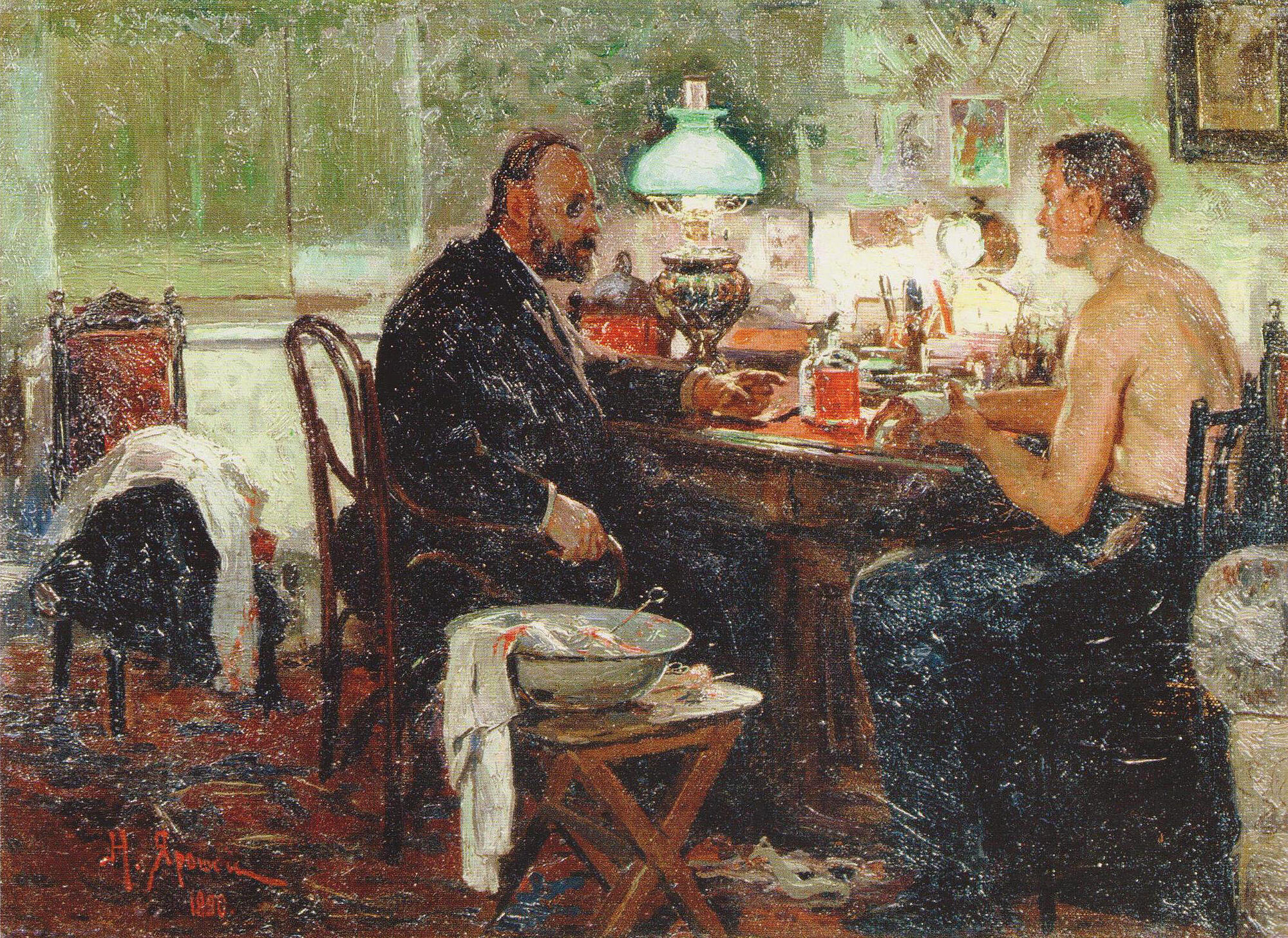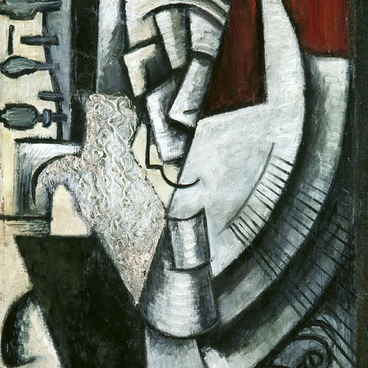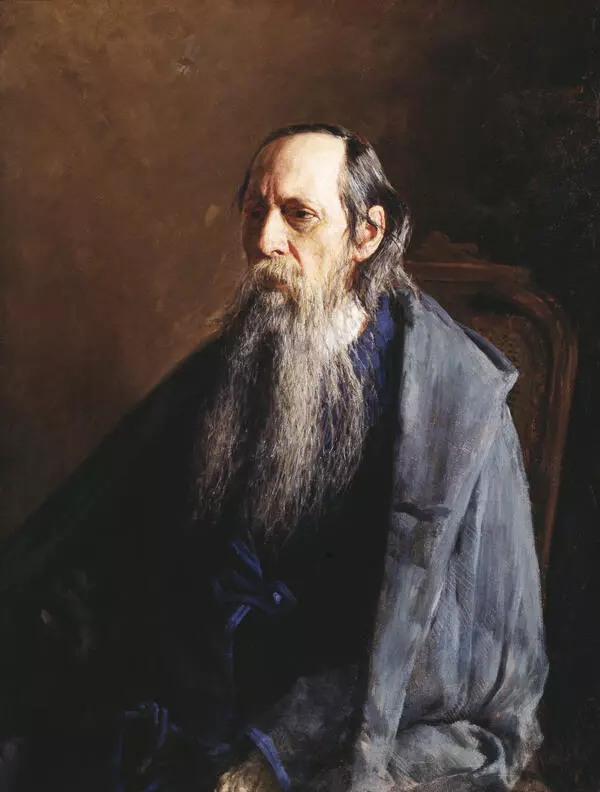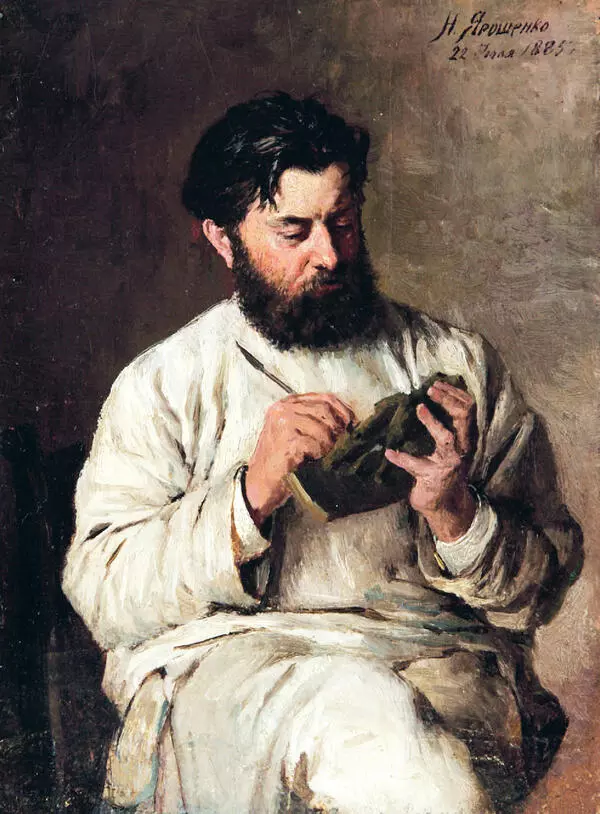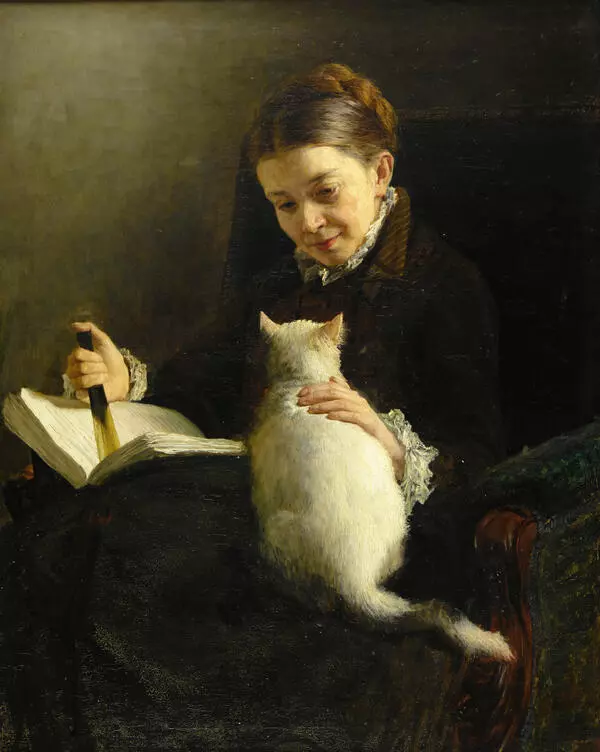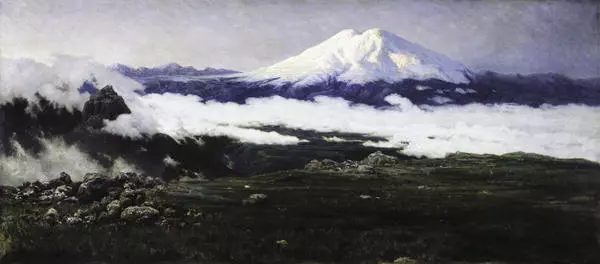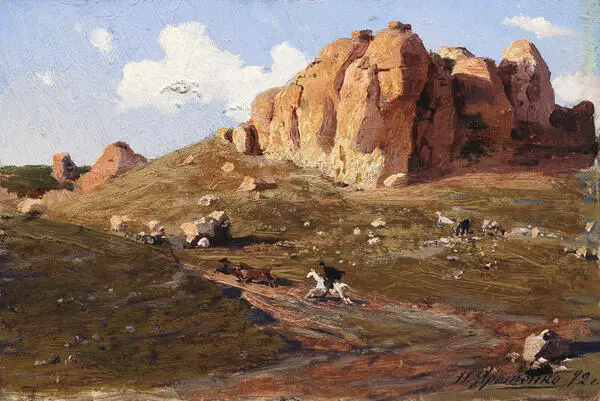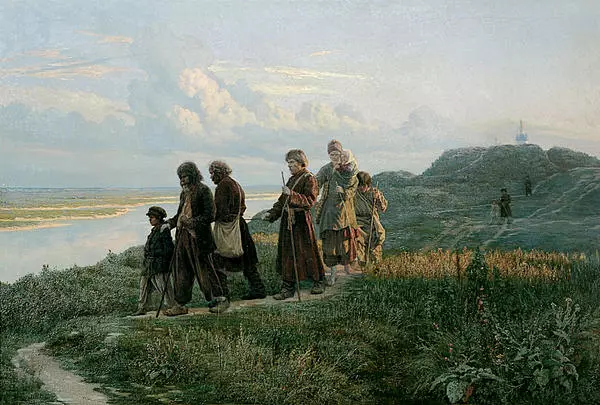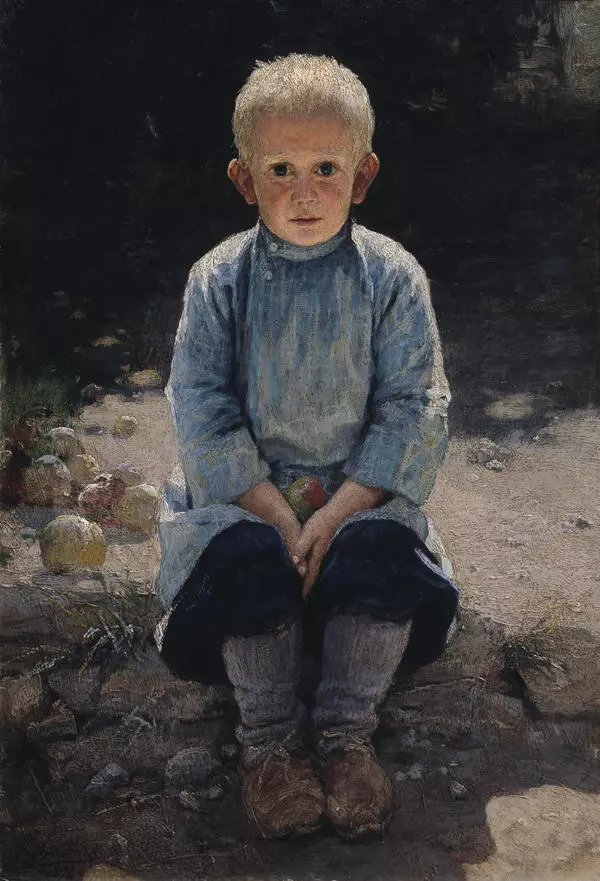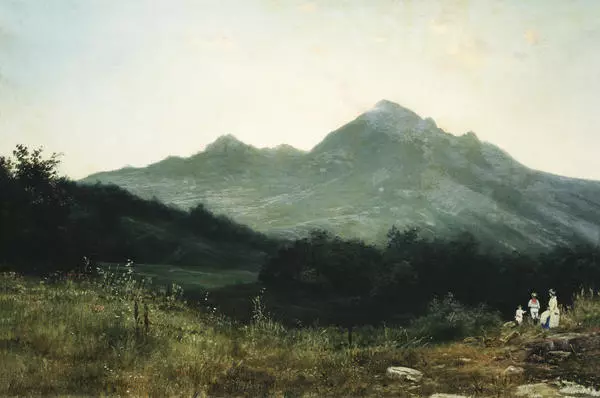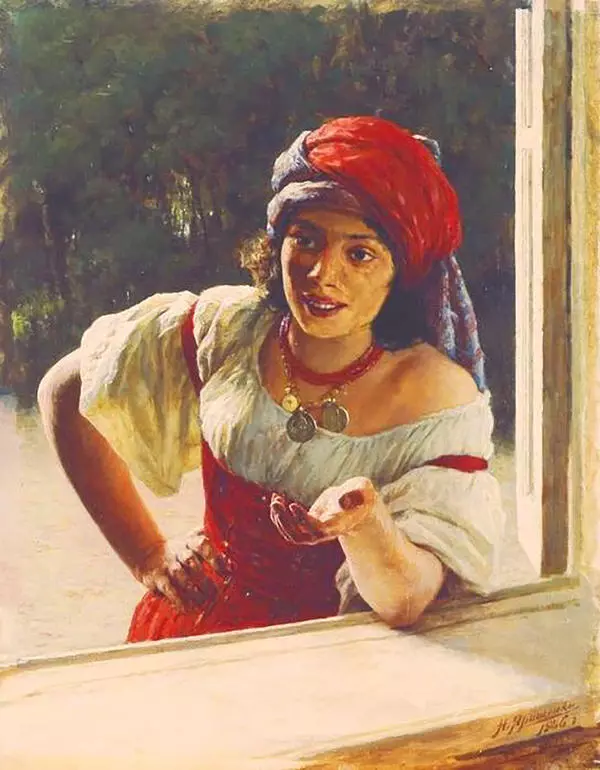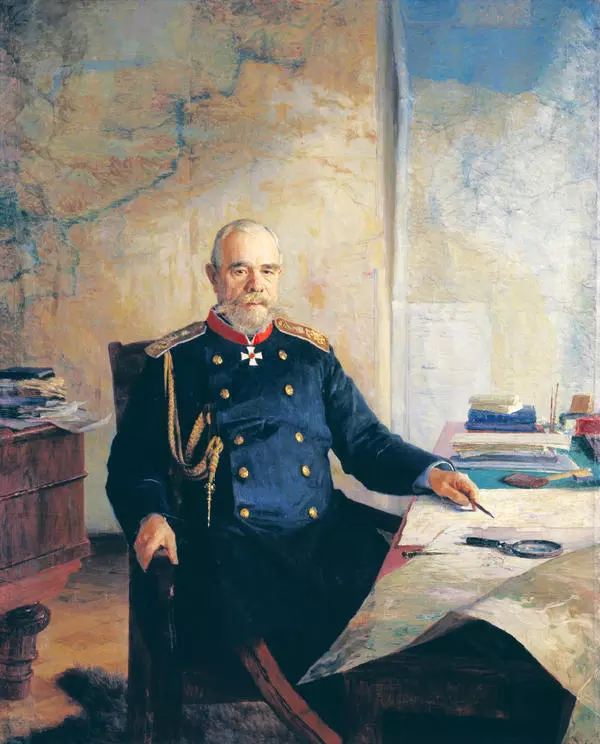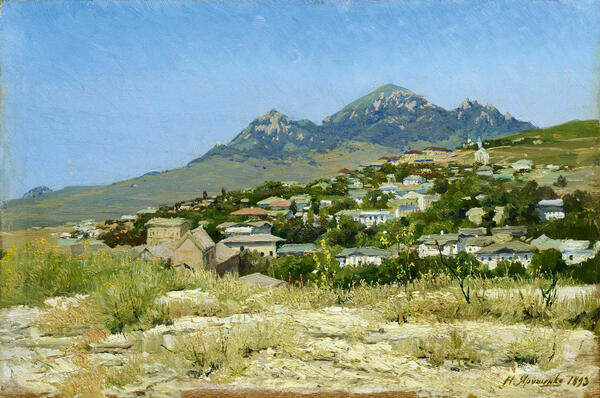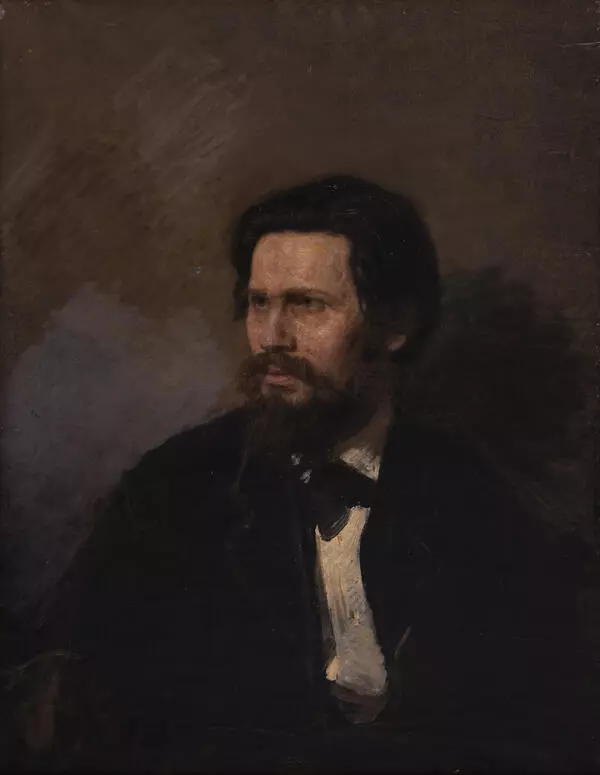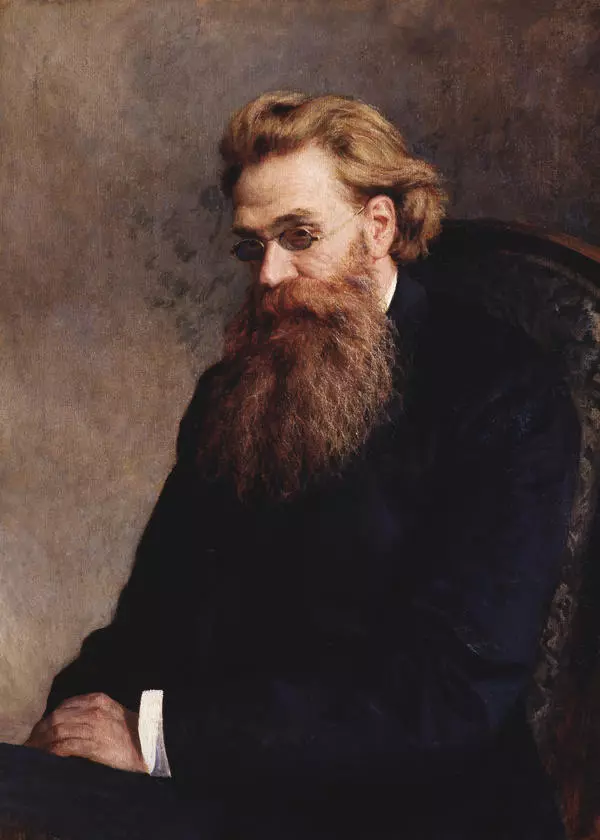In the 1880s, a stationary system of rural medicine appeared in Russia. The provinces were divided into several medical districts. In the central district, a hospital for 15–20 beds was built, in which places were allocated for women in labor; a small outpatient clinic was created. The doctor received and treated patients from all districts on a daily basis. He was assisted by a paramedic, nanny and midwife who help to deliver a baby. Industrial owners were also obliged to maintain hospitals and dispensaries. It was forbidden to charge workers for medical care, medicines and nursing care during illness.
The exhibition of the Chelyabinsk State Museum of Fine Arts displays a painting depicting a scene of a doctor’s appointment. The creator of the canvas is the Russian itinerant artist Nikolay Yaroshenko.
Yaroshenko was born in 1846, in Poltava, into the family of a retired Major General Alexander Yaroshenko. The father wanted his eldest son to pursue a military career. Therefore, he did not give enough credit to the fact that Nikolay Yaroshenko was passionate about painting and drawing.
In 1855, Yaroshenko was sent to the Poltava Cadet Corps. Eight years later, he entered the St. Petersburg Pavlovsk Infantry School after which he continued his studies at the Mikhailovskaya Artillery Academy. However, at the same time, he began to attend classes at the Academy of Arts and evening classes of the Society for the Encouragement of Arts, where Ivan Kramskoy taught.
In 1875, Yaroshenko exhibited his work for the first time — at the 4th Traveling Art Exhibition. A year later, he became a member of the Society of Traveling Art Exhibitions, immediately after that he was elected to the board. Yaroshenko was a follower of the founder and ideological inspirer of the Partnership, Ivan Kramskoy, who allowed paintings of talented artists to be exhibited, even if their work was not associated with the traditions of realists. Impressionism penetrated into art at this time: the exact manner of painting in restrained colors was replaced by sweeping textured strokes of light and rich colors, and the artists were more eager to convey in the picture the impression of the scene they saw than its reliability.
Yaroshenko also painted in this new manner. He created the painting ‘Doctor’s Appointment’ in 1890. In this canvas, with the help of light, warm colors and chaotic strokes, the artist conveys the atmosphere of an evening apartment. Judging by the burning lamp, the doctor is seeing an urgent patient outside of office hours.
Yaroshenko has always been attracted to people of intellectual labor: writers, scientists, artists, doctors. Yaroshenko’s wife Maria Nevrotina wrote,
The exhibition of the Chelyabinsk State Museum of Fine Arts displays a painting depicting a scene of a doctor’s appointment. The creator of the canvas is the Russian itinerant artist Nikolay Yaroshenko.
Yaroshenko was born in 1846, in Poltava, into the family of a retired Major General Alexander Yaroshenko. The father wanted his eldest son to pursue a military career. Therefore, he did not give enough credit to the fact that Nikolay Yaroshenko was passionate about painting and drawing.
In 1855, Yaroshenko was sent to the Poltava Cadet Corps. Eight years later, he entered the St. Petersburg Pavlovsk Infantry School after which he continued his studies at the Mikhailovskaya Artillery Academy. However, at the same time, he began to attend classes at the Academy of Arts and evening classes of the Society for the Encouragement of Arts, where Ivan Kramskoy taught.
In 1875, Yaroshenko exhibited his work for the first time — at the 4th Traveling Art Exhibition. A year later, he became a member of the Society of Traveling Art Exhibitions, immediately after that he was elected to the board. Yaroshenko was a follower of the founder and ideological inspirer of the Partnership, Ivan Kramskoy, who allowed paintings of talented artists to be exhibited, even if their work was not associated with the traditions of realists. Impressionism penetrated into art at this time: the exact manner of painting in restrained colors was replaced by sweeping textured strokes of light and rich colors, and the artists were more eager to convey in the picture the impression of the scene they saw than its reliability.
Yaroshenko also painted in this new manner. He created the painting ‘Doctor’s Appointment’ in 1890. In this canvas, with the help of light, warm colors and chaotic strokes, the artist conveys the atmosphere of an evening apartment. Judging by the burning lamp, the doctor is seeing an urgent patient outside of office hours.
Yaroshenko has always been attracted to people of intellectual labor: writers, scientists, artists, doctors. Yaroshenko’s wife Maria Nevrotina wrote,
